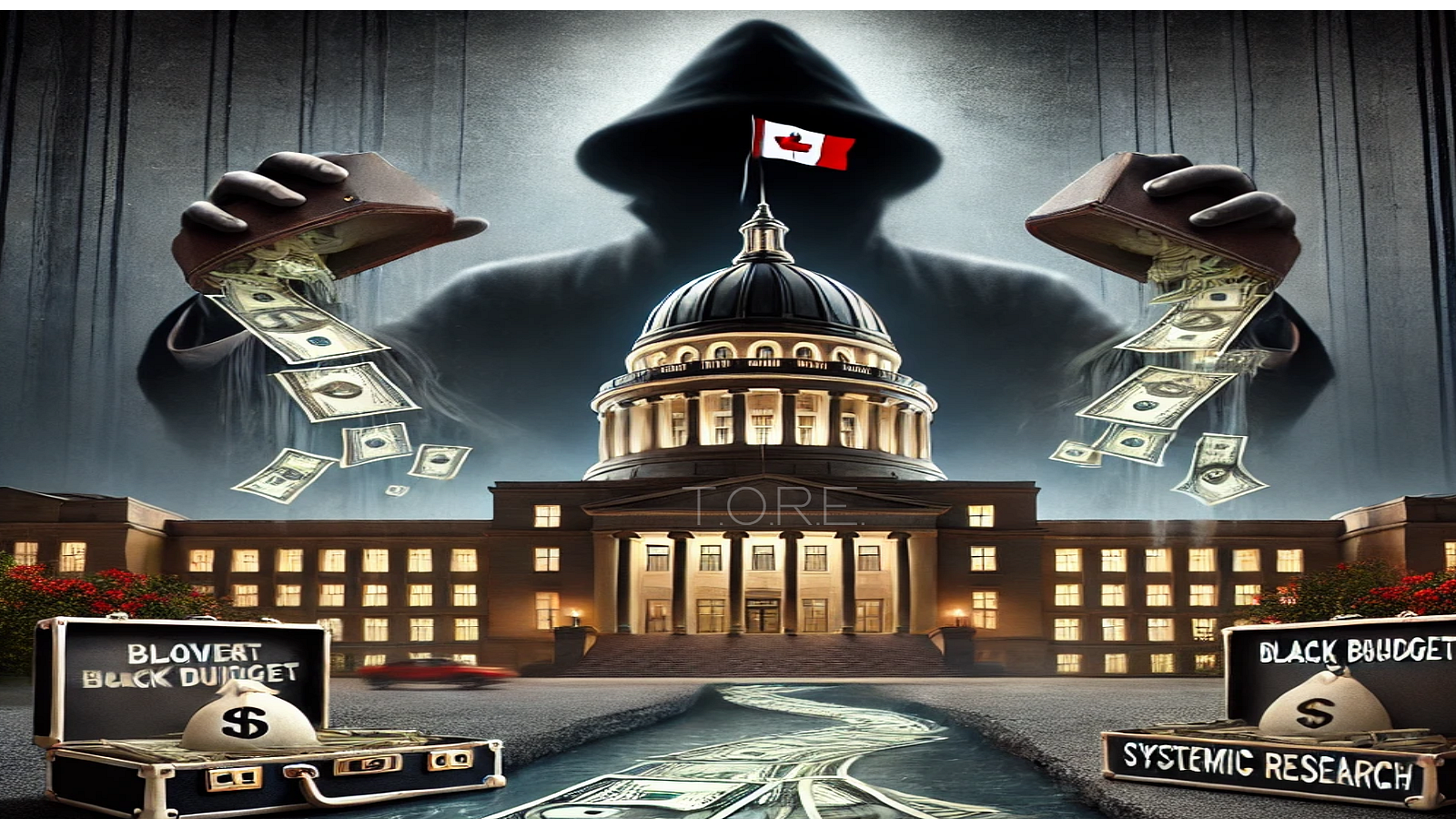U.S. FUNDING OF A CANADIAN PUBLIC UNIVERSITY—BLACK BUDGET OPERATIONS OR SYSTEMIC FRAUD?
A Half-Billion Dollar Mystery: How a Canadian Public University Receives Massive U.S. Government Funding Without Oversight
At the core of this matter lies a fundamental question: How does a publicly funded institution in one sovereign nation receive such substantial and sustained financial support from a foreign government without transparency or formal disclosure?
The covert flow of undisclosed funding through Canadian academic institutions is neither new nor without precedent. Decades ago, McGill University became the epicenter of one of the most egregious cases of clandestine foreign influence when the CIA secretly financed psychological and neurological experiments under Project MKUltra. Conducted under the guise of scientific research, these inhumane trials subjected unwitting individuals to electroshock therapy, high-dose hallucinogens, and sensory deprivation—without consent. The goal? To refine coercive interrogation techniques and push the boundaries of mind control.
That chapter in history was thought to be closed. Yet today, another Canadian university stands at the center of an unsettling financial mystery that closely resembles past deceptions. A half-billion-dollar question looms: Why does a publicly funded Canadian university receive hundreds of millions annually from the U.S. government without disclosure, oversight, or accountability?
As mentioned, a publicly funded university in Canada, financed by taxpayer contributions and student tuition, has received nearly half a billion dollars annually from the United States government through undisclosed channels. The absence of transparency surrounding this funding raises questions about financial accountability, legal compliance, and potential national security implications for Canada and the United States.
The scale of this financial arrangement is without precedent for a Canadian academic institution. While universities frequently engage in international research collaborations, the secrecy and magnitude of these transactions suggest an entirely different level of foreign involvement—one that may extend beyond conventional academic partnerships. The lack of public disclosure or parliamentary oversight raises serious concerns about the potential existence of covert intelligence operations, classified military research agreements, or undisclosed contractual obligations embedded within the university’s financial structure. If these funds are linked to U.S. defense or intelligence agencies, this could represent a serious breach of fiduciary responsibility by university administrators and an alarming precedent for foreign government influence over Canada’s higher education sector.
The implications of this discovery extend well beyond Canada’s borders. Suppose this funding is funneled through black budget operations, classified defense contracts, or intelligence programs. In that case, American taxpayers may unknowingly be financing foreign-based initiatives outside congressional oversight. Such an arrangement raises significant concerns regarding the circumvention of financial and regulatory safeguards, the potential misallocation of public funds, and the erosion of national security protocols in both nations.
This situation is not without historical precedent. The U.S. government has a documented history of using academic institutions to facilitate classified research, intelligence gathering, and military technology development. From Cold War-era psychological warfare experiments such as Project MKUltra—wherein the CIA secretly funded unethical neurological and psychological testing at McGill University—to DARPA’s ongoing investments in artificial intelligence, cybersecurity, and defense-related research, American agencies have long relied on universities to conduct sensitive projects under the guise of academic inquiry. If similar activities occur at this Canadian institution, who authorized them, and why have they remained undisclosed?
Toronto Metropolitan University
Toronto Metropolitan University (TMU), formerly Ryerson University, is a publicly funded institution in downtown Toronto, Ontario. Established in 1948, it has evolved into one of Canada’s leading universities, known for its strong focus on applied research, innovation, and industry partnerships. TMU is financed primarily through Canadian federal and provincial government funding, student tuition, and research grants, making it an integral part of the country’s public higher education system.
As a public university, TMU operates under a financial model that relies on domestic funding sources, ensuring transparency and adherence to Canadian regulatory frameworks. Given this structure, the revelation that TMU has been receiving hundreds of millions of dollars annually from the U.S. government—through undisclosed channels—raises serious questions about financial oversight, institutional integrity, and national sovereignty. While Canadian universities frequently collaborate with international partners on research initiatives, the sheer magnitude of U.S. funding flowing into TMU is without precedent and defies conventional academic financial norms.
This level of foreign government investment in a Canadian public institution is highly unusual, if not unfathomable. It challenges the fundamental principles of financial transparency and public accountability, demanding closer scrutiny into the nature of these transactions, their intended purpose, and the potential implications for Canada’s higher education system.
But this case presents an even more troubling possibility: Could this financial arrangement be a sophisticated money-laundering operation designed to obscure the true origins and destinations of U.S. federal funds?

A Global Pattern of Covert Academic Influence
The financial structure underpinning this undisclosed funding resembles documented cases where foreign governments have leveraged academic institutions to exert strategic influence, obscure financial transactions, or facilitate covert operations. Prestigious institutions such as the University of Cambridge and leading European universities have already been implicated in controversies surrounding undisclosed foreign funding, raising serious concerns about potential money laundering, compromised academic independence, and national security risks. If U.S. government funds are flowing through this Canadian university only to be redirected into private U.S. interests, undisclosed defense contractors, or foreign-controlled entities, it would constitute financial misconduct on an international scale.
Keep reading with a 7-day free trial
Subscribe to Tore Says to keep reading this post and get 7 days of free access to the full post archives.




